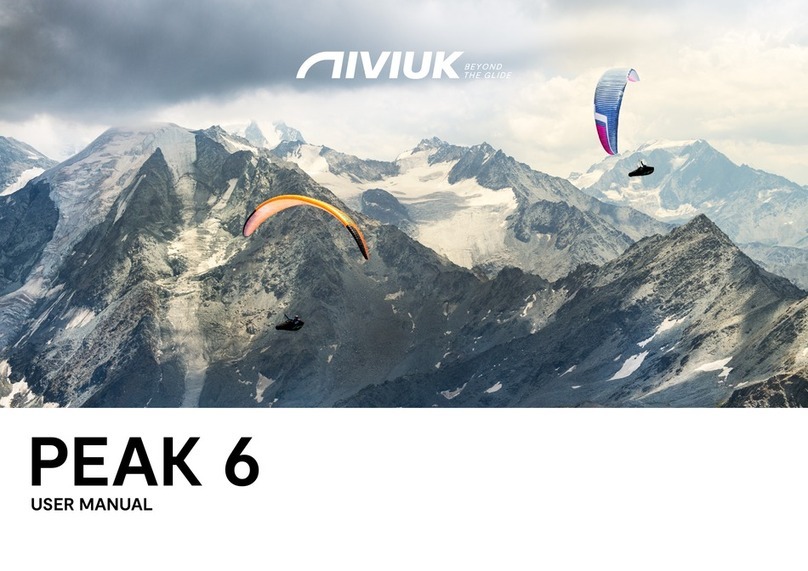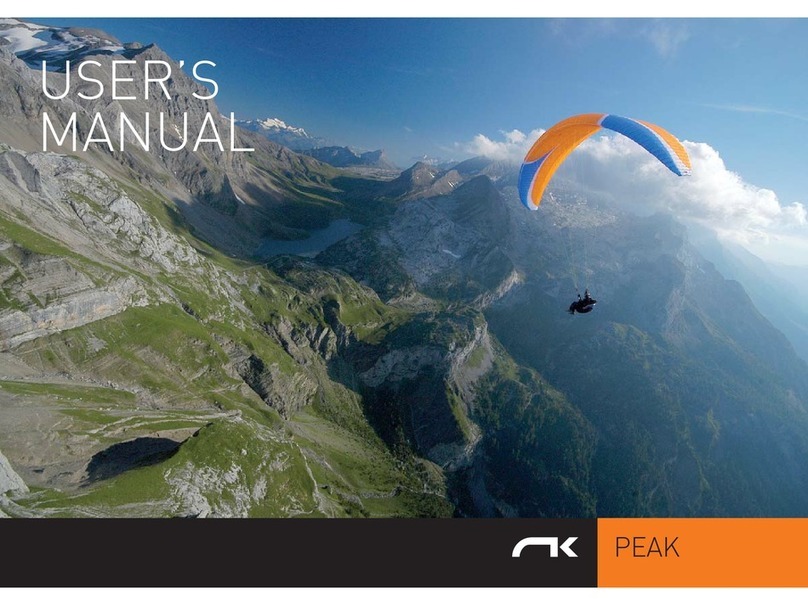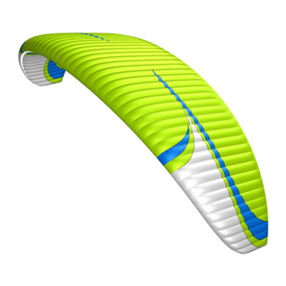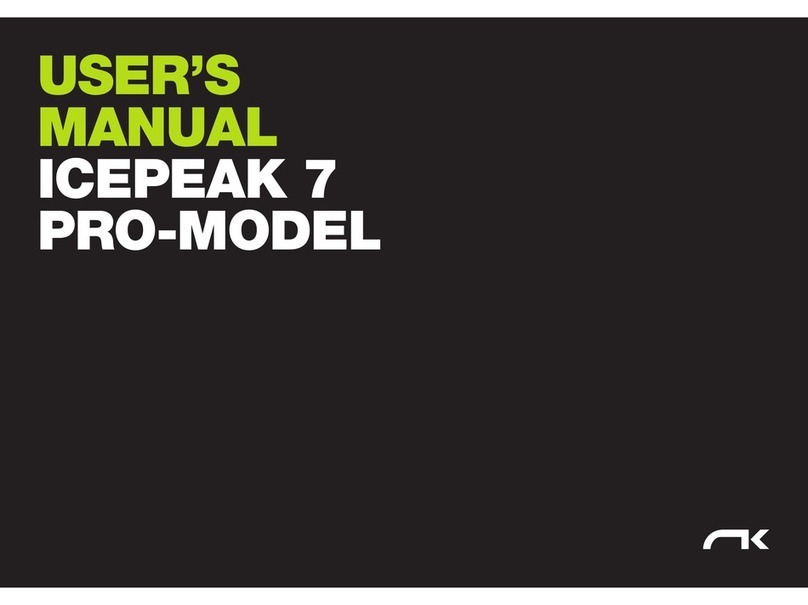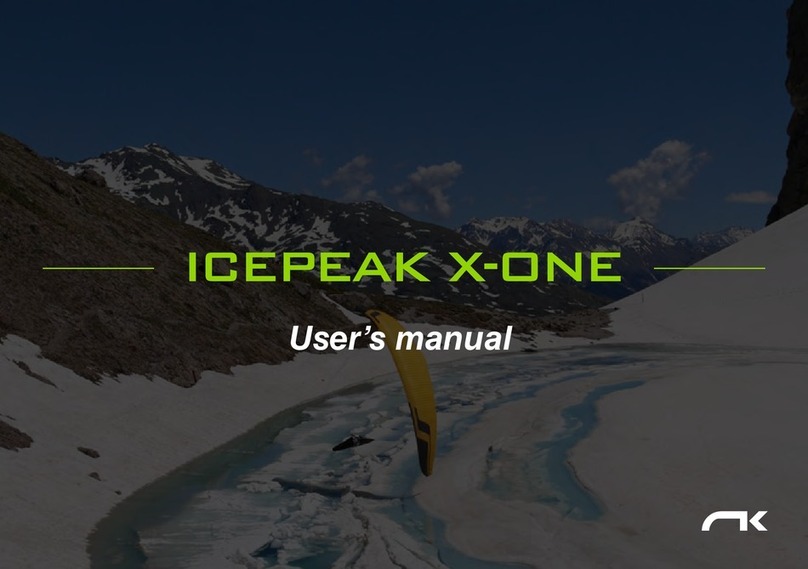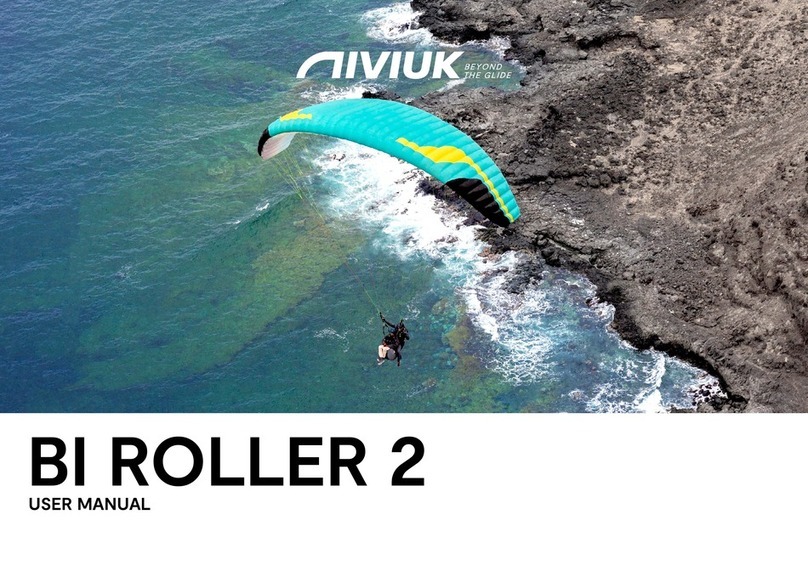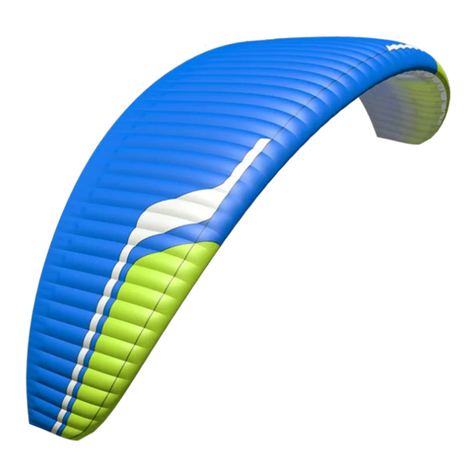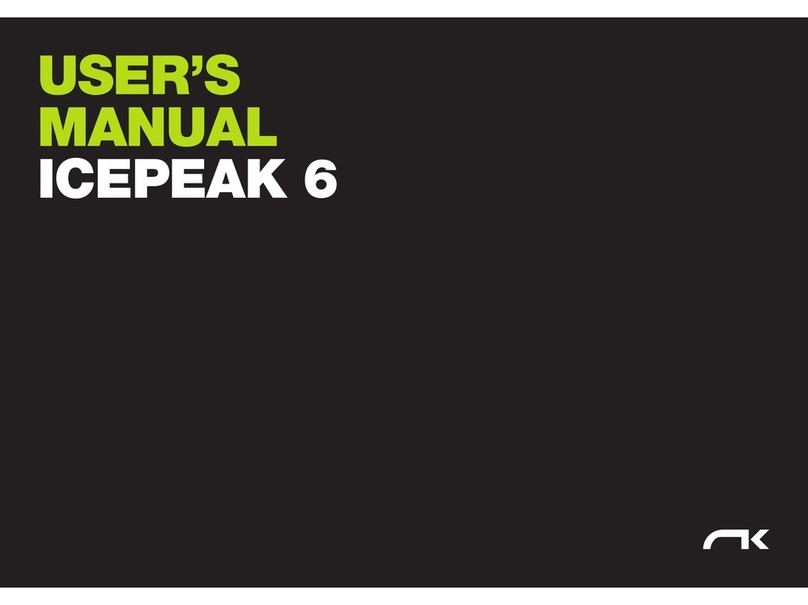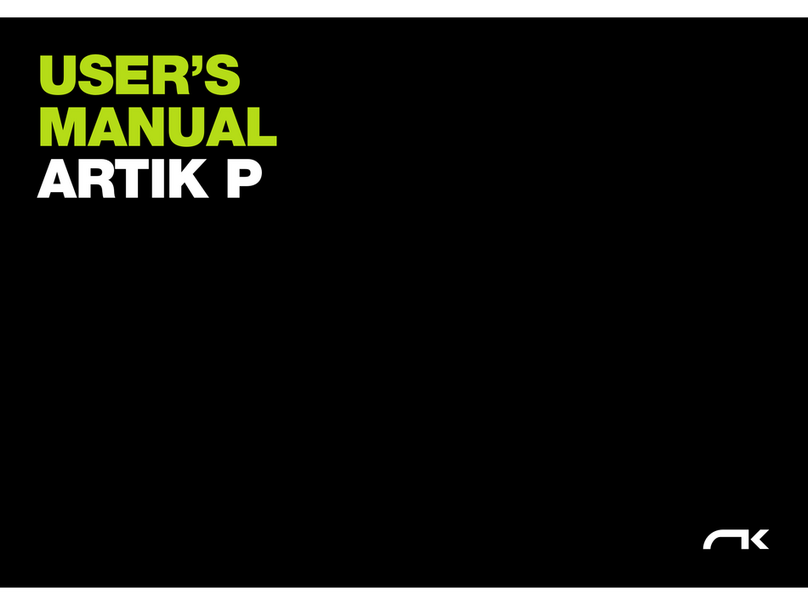8
of the wing. When the wing is about to experience an asymmetric
collapse the brake lines and the harness will transmit a loss of pressure
to the pilot. To prevent the collapse from happening, pull the brake line
corresponding to the compromised side of the wing, this will increase the
angle of incidence. If the collapse does happen the HOOK 3 will not react
violently, the turn tendency is very gradual and it is easily controlled.
Lean your body towards the side that is still ying in order to counteract
the turn and to maintain a straight course, if necessary slightly slow
down the same side. The collapse will normally open by itself but if that
does not happen, pull completely on the brake line on the side which has
collapsed (100%). Do this with a rm movement. You may have to repeat
this operation to provoke the re-opening. Take care not to over-brake on
the side that is still ying (turn control) and when the collapse has been
solved; remember to let the wing recover its ying speed.
Symmetric collapse
In normal ying conditions the design of the HOOK 3 ensures that a
symmetric collapse is quite improbable. The prole of the wing has been
designed to widely tolerate extreme changes in the angle of incidence.
A symmetric collapse may occur in heavy turbulent conditions, on entry
or exit of strong thermals or lack of adapting the use of the accelerator
to the prevailing air conditions. Symmetrical collapses usually re-inate
without the glider turning but you can symmetrically apply the brake
lines with a quick deep pump to quicken the re-ination. Release the
brake lines immediately to recover optimum ight speed.
Negative spin
This conguration is out of the normal ight behaviour of the HOOK
3. Certain circumstances however, may provoke this conguration
such as trying to turn when the wing is ying at very low speed (while
heavily braking). It is not easy to give any recommendations about this
situation since it varies depending on the circumstances. Remember
that you should restore the relative air speed over the wing. To achieve
this, progressively reduce the pressure on the brake lines and let the
wing gain speed. The normal reaction would be a lateral surge with a
turn tendency no greater than 360º before restoring to normal ight
conditions.
Parachutal stall
The possibility of this happening has been eliminated by the design of the
HOOK 3 and it is highly unlikely to happen on this paraglider. If it does
happen, the feeling would be that the wing would not be advancing; you
would feel a kind of instability and a lack of pressure on the brake lines,
although the canopy would appear to be correctly inated. The correct
reaction would be to release the pressure on the brake lines and push the
A lines forward or rather lean your body to any side WITHOUT PULLING
ON THE BRAKE LINES.
Deep Stall
The possibility of the HOOK 3 falling into this conguration is almost
nonexistent, if the factory settings have not been altered. This could
happen if you are ying at a very low speed, whilst over steering in a
number of manoeuvres and in turbulent conditions.
To provoke a deep stall you have to take the wing to minimum ight
speed by symmetrically pulling the brake lines, when you reach this
point, continue pulling until you reach 100% and then hold. The glider
will rst fall behind you and then situate itself above you, rocking slightly,
depending on how the manoeuvre was carried out. When you start to
provoke a stall, be positive and do not doubt an instant. Do not release
the brake lines when half way through the manoeuvre. This would cause
the glider to surge violently forward with great energy and may result
in the wing below the pilot. It is very important that the pressure on the
brake lines is maintained until the wing is well established vertical above.
To regain normal ight conditions, progressively and symmetrically
release the brake lines, letting the speed be re-established. When the
wing reaches the maximum advanced position ensure that the brakes
are fully released. The wing will now surge forward, this is necessary so
that air speed is completely restored over the wing. Do not over brake
at this point because the wing needs to recover speed to quit the stall
conguration. If you have to control a possible symmetrical front stall,

